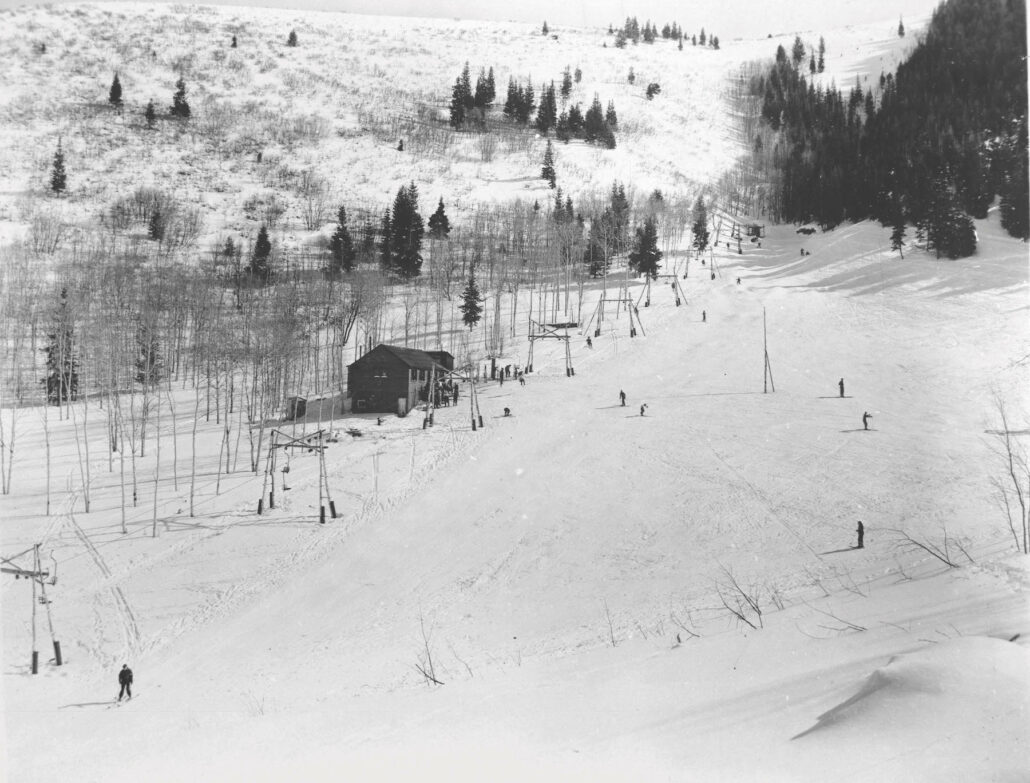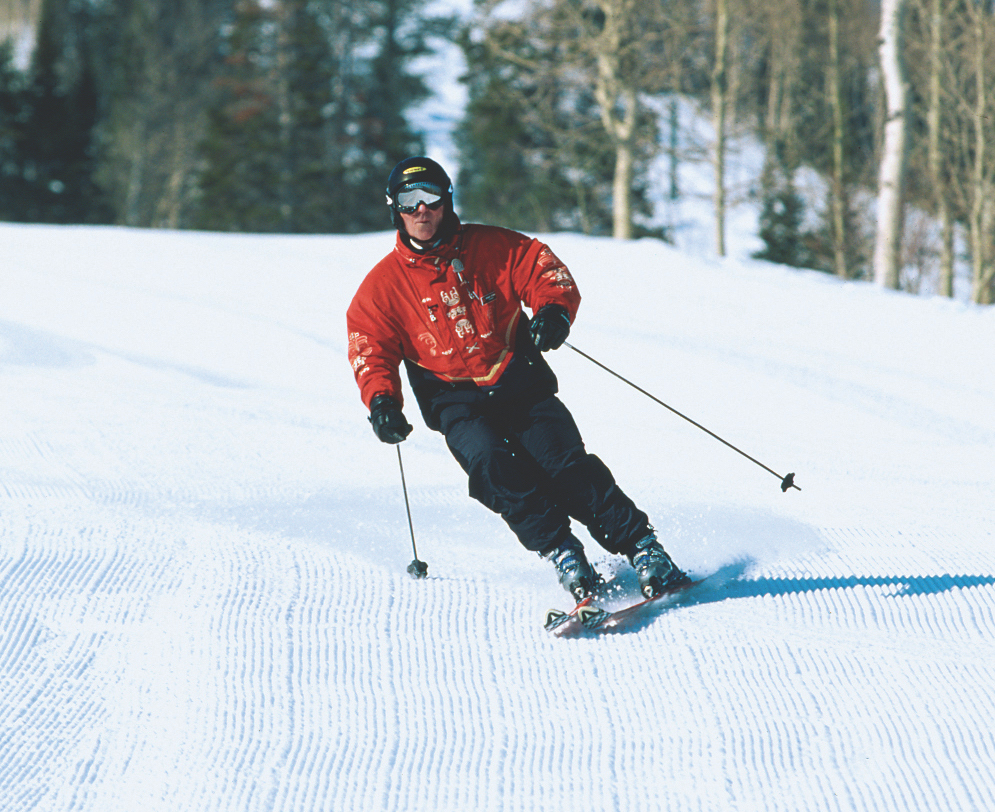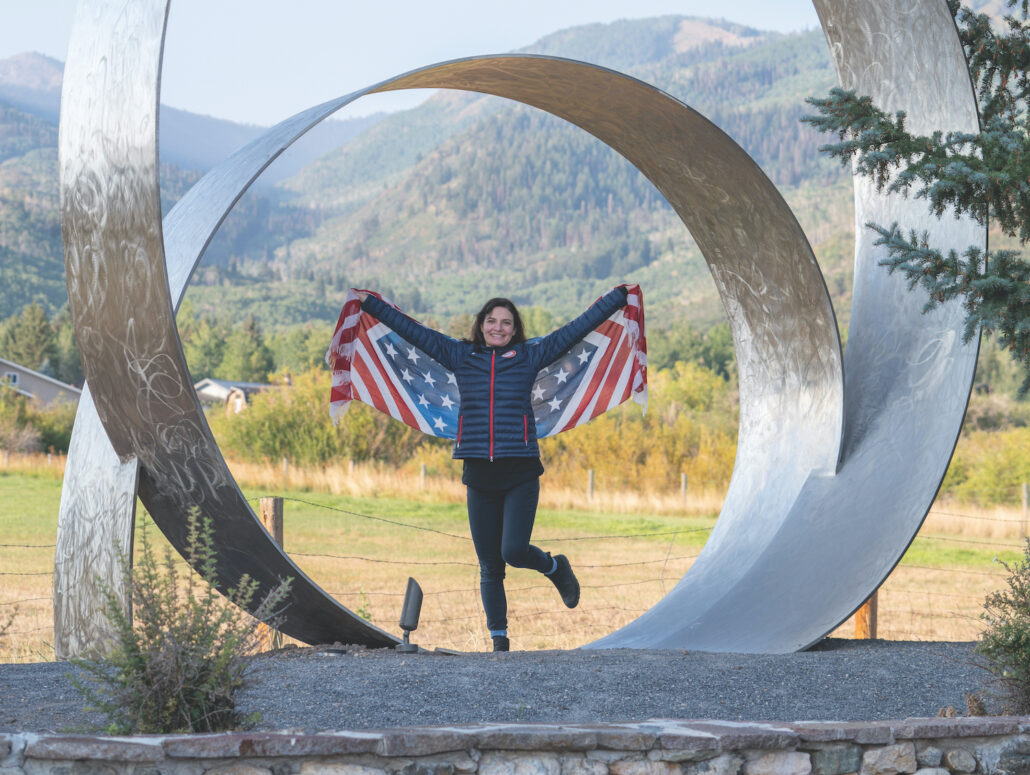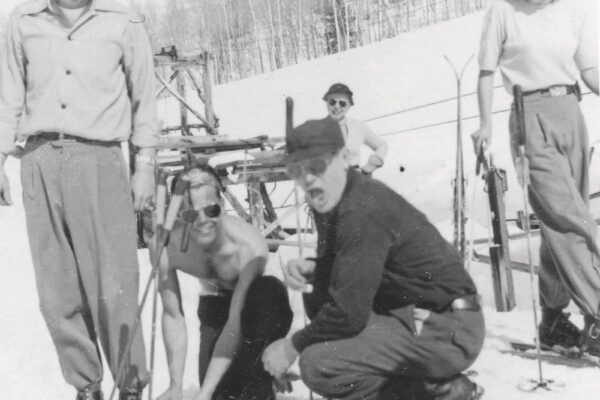
The godfathers of Park City skiing
Meet Otto Carpenter and Bob Burns, two locals who built Park City’s first ski lift
Winter/Spring 22-23
Written By: Darby Doyle | Images: Courtesy Park City Historical Society & Museum
If you’ve ever swooshed down the Success or Little Kate runs at Deer Valley or enjoyed some après-ski nosh at Snow Park Lodge, you can thank the legacy of Bob Burns and Otto Carpenter. In the 1940s, these two Park City ski buddies created the first lift-served skiing on what in now Deer Valley’s famed corduroy slopes.
While skiing was typically considered to be a form of transportation prior to the 20th century, skiing as sport caught on in the West in the 1920s and ’30s. Thousands of people came up Parleys Canyon each winter to watch ski jumping events at Ecker Hill, and Frog Valley — also called Deer Valley — was the 1936 site of Park City’s first winter carnival, which drew over 500 people who took the “ski train” up Parleys Canyon to attend the event.
Skiing became so popular in the ’30s that dozens of federal Works Progress Administration (WPA) and Civilian Conservation Corps (CCC) projects focused on cutting ski trails and building warming huts in Utah. Near the Ontario Mine in Frog Valley, a WPA crew cleared several runs for “walk-up- and-ski-down” skiing.
After returning from World War II, two Park City locals, Otto Carpenter and Bob Burns, got tired of driving all the way to Alta and Brighton to ski lift-served runs. So, they gathered funding to develop the WPA runs near the Ontario Mine into lift-served skiing. The duo leased the surface rights from the mining company and named the area Snow Park Ski Area.
Bob, who was a machinist for Judge Mine, built Snow Park’s original T-bar using scavenged mining equipment and as many new parts as they could afford. The lift was powered with a Ford Model A engine and opened in 1946.
Each day started with an assembly line of helpers — often kids recruited from the ski school — who could take the first “chair” of the day in exchange for helping transport gasoline to the motor installed at the top of the lift.
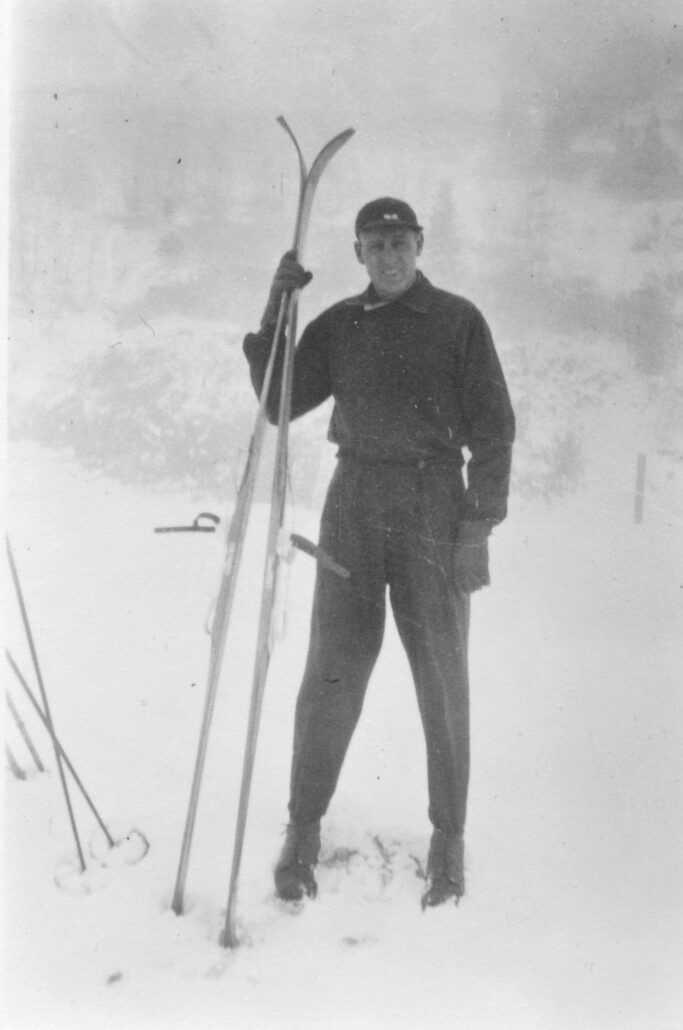
The ski area operated only on weekends and holidays, and a day pass was $1 for kids and $2.50 for adults.
In the following years, they added the Otto Bahn chairlift and a snack bar (now the site of Snow Park Lodge) where their wives, La Rue Carpenter and Rintha Burns, sold chili, drinks, and 25-cent burgers.
Several local ski clubs frequented the ski area, but some — most notably the Brigham Young University ski club — declined to ski at Snow Park because they would have to drive through Park City’s red-light district (along what’s now Deer Valley Drive) to get to the lifts.
Otto eventually bought out Bob and operated Snow Park until 1969, when United Park City Mines declined to renew the ski area’s lease. This was in part because of competition from Treasure Mountain — now Park City Mountain — which opened in 1963.
In 1981, after a massive overhaul of the area, Deer Valley Resort opened where Snow Park Ski Area once stood. Deer Valley honored Bob and Otto by naming two base area lifts after them — Burns and Carpenter Express — and named the resort’s main lodge after the beloved local ski spot.
